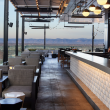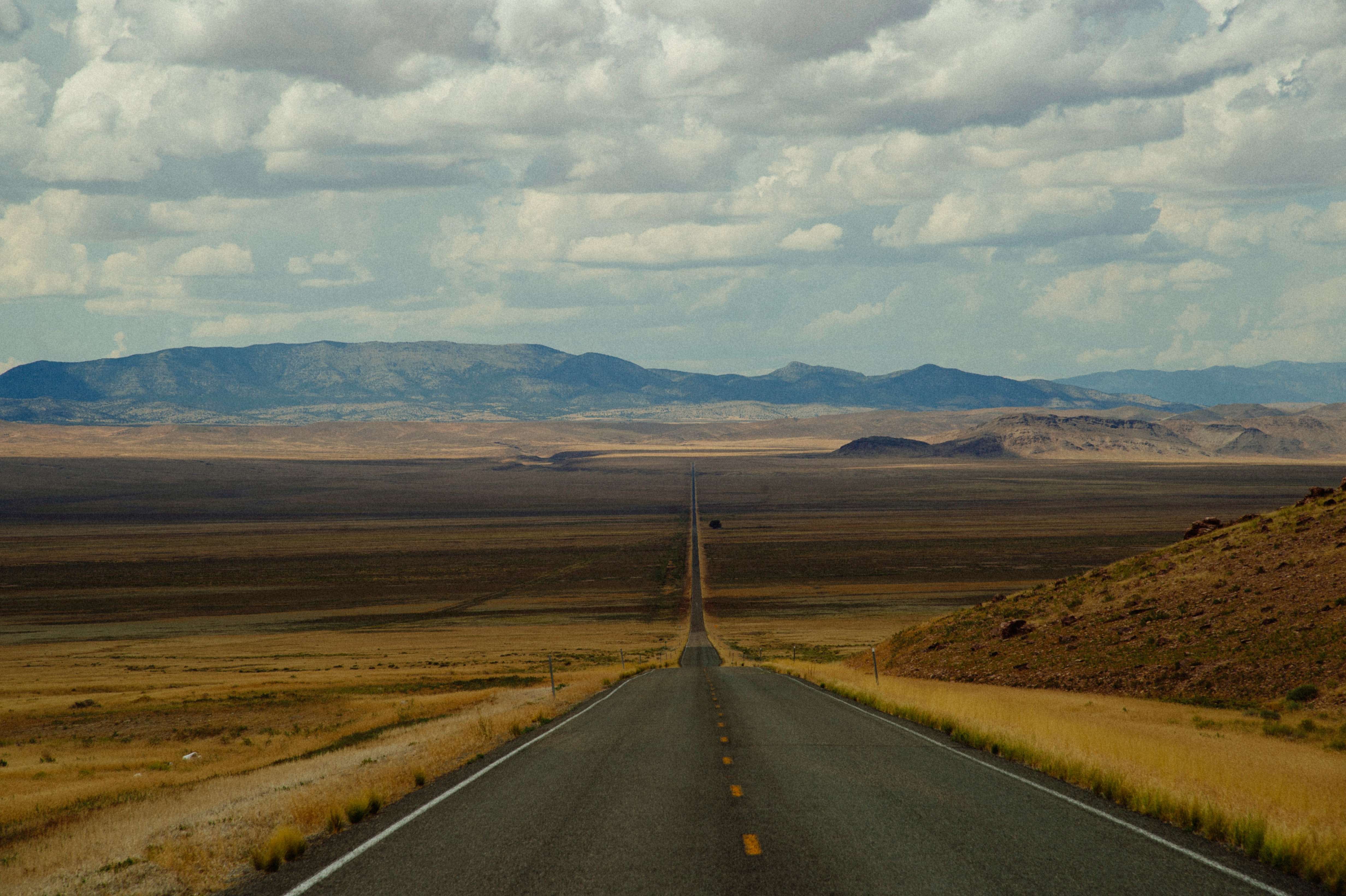With its bright lights, entertaining shows and the chance to strike it rich, Las Vegas will always be the star of the show in Nevada. But for those who are looking to explore beyond the city limits, the state opens up to a vast landscape via the Great Basin Highway where the desert actually sleeps and the brightest lights are naturally made in the sky.
Luckily for those who live in Denver, a direct flight to Las Vegas is easy to come by and is the perfect starting point to begin your adventures on the open road. Rent a car, hit the pavement and discover the West’s most unique landscapes, Nevada’s only glacier, some of the nation’s darkest, star-studded skies, geological wonders and small towns that capture the spirit of the Old West.
Park Hopping in the Great Basin
Where the mountains meet a sea of sagebrush and where jagged peaks act like desert islands providing cooler air and more water, the Great Basin is a geological wonder. The Great Basin derives its name from the collection of water in the middle of the desert because it has no outlet to the sea. Stretching for 200,000 square miles, it encompasses most of Nevada and reaches into neighboring states such as Utah.
While the landscape is vast and lonely within the Great Basin, the 355-mile Great Basin Highway guides road trippers to several notable stops along the way including five state parks and a national park.
Kick off your whirlwind tour with a visit to Valley of Fire State Park, Nevada’s first and largest state park. A short 45-minute drive north of Las Vegas, the area’s fire orange and red sandstone formations emerge rapidly from the earth to create a rugged and colorful landscape that was once submerged under the sea millions of years ago.
The park features many hiking trails filled with stunning geological formations, ancient petroglyphs and petrified wood. For those scorching hot days in the summer, the park closes some of the hiking trails and advises against hiking others when it’s over 85 degrees, a drive inside your air-conditioned car along the White Dome’s Road reveals the heart of the park and all its wonder.
From here your journey will begin along the Great Basin Highway toward Cathedral Gorge State Park and Kersher-Ryan State Park. Both don’t require as much time as Valley of Fire but are great stops along the way.
Cathedral Gorge State Park lies just off HWY 93, near the town of Pioche. Resting in a long, narrow valley nearly hidden from the roadside, a sort-of mini Bryce Canyon emerges with hoodoos, spires and dramatic formations made out of soft clay material. Hike amongst the slot canyons, gaze up at the wall of cave-like structures or take in the scenery from above at the Miller Point Overlook.
Located nearby is the Kershaw-Ryan State Park, a hidden verdant oasis in the middle of heated temperatures. Grab a picnic and enjoy a quiet lunch amongst the rose bushes and waterfalls, all under a grove of shaded trees. A quick 1.5-mile hike via the Canyon Overlook Loop will bring you to the top of the park revealing beautiful views of the surrounding landscape.
Uncover a bit of history about Nevada’s old silver mining days with a stop at the Ward Charcoal Ovens State Park. Explore, inside and out, several eye-catching, 30-foot-tall, 27-foot-wide, beehive-shaped charcoal kilns. Originally built in the 1870s to power Nevada’s then-largest silver mines, they were also used as hideouts for stagecoach bandits. Stand inside, walk around, stargaze or hike into the historic Ward Mining District.
And because the desert gets hot, cool off with a day at the Cave Lake State Park. The turquoise-color reservoir provides access to on-the-water activities such as paddle boarding, boating and trout fishing. Stick to dry land and get a grand view of the lake with the Overlook Trail, a strenuous 4.5-mile loop that provides a top-of-the-world perspective of the area’s unique geology.
Great Basin National Park
The epicenter of the Great Basin Highway is without a doubt the Great Basin National Park. Explore it all from a blanket of stars above to 250 feet below the earth’s floor, and 5,000 year-old-pine trees in between, Anchored by the state’s second-highest mountain peak, Wheeler Peak at 13,065 feet, the park is a beacon for adventurers of all kinds.
Work your way from the bottom up by beginning your discovery of the park with a guided tour of the Lehman Caves. Stretching for two miles and 250 feet underground, the hypogenic cave formed from the ground up between two and 10 million years ago. Walk amongst stalactites, stalagmites, helictites (branching formations that defy gravity) and flowstones, plus rare formations like the turnip stalactites make this one of the more unique caves to explore. The tour costs $12 and lasts about an hour.
After emerging from the underworld, head up the mountain with a drive along Wheeler Peak Scenic Drive revealing sweeping views of the valley floor below and surrounding peaks that establish the horizon. The 12-mile road winds through thousands of feet of elevation amongst a diverse landscape and ends at the Wheeler Peak campground.
From here you can catch some of the most popular trails at the park. The Bristlecone and Glacier Trail and the Alpine Lakes Loop (2.7 miles RT). Combine these hikes, which can be connected together for an overall trail length of 7.5 miles. See a 4,000-year-old bristlecone pine grove (for which the park is known), two alpine lakes and the state’s only glacier. Or challenge yourself with the summit of Wheeler Peak, connecting at Stella Lake for an 8.2-mile round trip hike.
But don’t stop exploring after the sun goes down as “half the park is after dark.” Join park rangers at night to learn about the sky above and see for yourself with their guided astronomers and high-tech telescopes to see double stars and planets “up close.” They take their stargazing seriously here with traffic directed away from the amphitheater, red lights guiding your walk to meet the group, plus tripods, cameras and cell phone lights are not accepted. So, sit back and bask in one of the darkest skies in the country. The program is free and is on a first come first serve basis.
Where to Stay
While each of these parks offers camping and RV sites, take a break from the elements and find your way through the Great Basin by staying at some of the local towns that infrequently dot the highway. Located near the Cathedral Gorge State Park, the Old West town of Pioche was established in 1963 with the discovery of silver. What you might call Nevada’s original sin city, Pioche was made famous for its rich mines and became infamous for its gunslinging days. Today, Boot Hill cemetery is the resting place for 70+ ill-fated people who were, as they say, “barried with their boots still on.”
The place to stay, well really the only place to stay, is the historic Overland Hotel that was once used as a boarding house and bar in the early 1900s. Grab a homestyle breakfast at the historic Silver Cafe and take in the historic sites of the Millon Dollar Courthouse, the Gem Theatre, Boot Hill Cemetary, Thompson’s Opera House and the aerial tramway that was once used to transport buckets of silver and nickel from nearby mines.
Resting on the eastern edge of the “loneliest road in America,” the mountain town of Ely makes an ideal place to rest before heading to Great Basin National Park. Once an important stop along the Nevada Northern Railway, Ely draws in visitors today with its well-preserved short-line railway, downtown murals, art galleries and Garnet Hill, where garnets and other gems are found.
Stay in the center of it all with a night at the Hotel Nevada. The historic hotel and gaming hall holds tight to its historic roots with its vintage signs and original design. There are several places to eat in town with favorites including the Racks Bar & Grill and Cellblock Steakhouse where you can enjoy your meal inside an old jail cell.
If you don’t plan to camp at Great Basin National Park, the nearby town of Baker offers a quaint retro motel option, the Stargazer Inn. Their modest rooms are clean and comfortable and all are attached to a general store where you can stock up on provisions and enjoy a can of wine on the front porch.
A Day in Las Vegas
Cap off your trip with 24 hours in Las Vegas. If you’re looking for the glitz and glam, of course, head to the strip for a show and dinner. Catch Vegas’s latest act, Mad Apple, and enjoy a relaxing evening with a quieter retreat at the Park MGM. Take in the lights by soaring above the lights on a helicopter tour of the Strip with Papillon Helicopter Tour and walking amongst the graveyard of historic neon lights at the Neon Museum.
Or discover vintage Vegas with a stay downtown, the city’s original footprint. Visit the Mob Museum to learn more about the Mob and its influence on sin city. Stroll the streets popping in and out of bars and eateries any foodie would gladly recommend. Or leave it to the experts and sign up for a Lip Smacking Foodie Tour and discover delectable eats at Carson’s Kitchen, 7th & Carson and Therapy. At night, take in the lights along Fremont Street and stay at the Circa, Vegas’s first adult-only hotel with the world’s largest sportsbook and one impressive pool.
The open road awaits you via the Great Basin Highway for one epic summer road trip you’ll never forget!
All photos were taken by Jessica Hughes unless otherwise specified.





